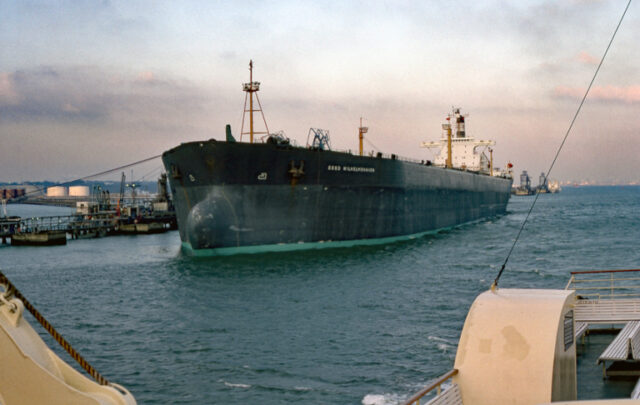
Soon the oceans will be too warm to support thriving coral reefs. USFWS – Pacific Region/Flickr, CC BY
This week, scientists registered their concern that super-warm conditions are building to a point where corals are severely threatened across the tropical Indian, Pacific and Atlantic oceans. They did so after seeing corals lose colour across the three major ocean basins – a sign of a truly momentous global change.
This is only the third global bleaching event in recorded history.
Underwater heat waves
The situation has been worrying scientists like myself for many months. Over the past 12 months, the temperatures of the upper layers of the ocean have been running unseasonably warm. Underwater heatwaves have torn through these tropical regions over summer, and corals across large areas of reef have lost their colour as the algal partners (or symbionts) that provide much of the food for corals have left their tissues. Bereft, corals are beginning to starve, get diseased and die.
The “heatwaves” that are causing the problem are characterised by extremes that are 1-3 degrees C warmer than the long-term average for summer. It doesn’t seem like much but past experience has shown us that exposure to small increases in temperatures for a couple of months is enough to kill corals in great numbers.
In the first global mass bleaching event in 1998, regions such as Okinawa, Palau and north-west Australia lost up to 90% of their corals as temperatures soared.
By the end of 1998 up to 16% of the corals on the world’s tropical reefs had died.
The key concern here is that corals are not an inconsequential part of the biology of the ocean. While geographically insignificant (less than 0.1% of the ocean), coral reefs punch well above their weight in terms of their importance to the ecology of the ocean and to humans.
Over a million species are thought to live in and around coral reefs, while an estimated 500 million people derive food, livelihoods and other benefits from coral reefs throughout the tropics.
Why the heatwaves?
Warm conditions were seen across the ocean in 2014, with an on-again off-again El Niño condition in the Pacific and similar conditions across Indian and Atlantic-Caribbean ocean regions.
As a result, surface waters came close to triggering mass coral bleaching in many places, and did trigger bleaching in many others. The equatorial Pacific, for example, experienced bleaching temperatures from April without relent, generating reports of extensive bleaching and mortality.
One question that is on everyone’s lips is, why the elevated temperatures?
At one level, the drivers for the current global bleaching event are clear. Climate change has been driving up sea temperatures. When natural variability adds to this trend, such as during El Niño, temperatures now exceed the threshold for mass coral bleaching and death.
This explanation has been sufficient for the last couple of decades. I have used it many times.
However, that may be changing as we learn that the intensity of El Niño may well also be vulnerable to changes in average global temperatures. A growing number of studies (see also here) are showing that strong El Niño are becoming more frequent, and climate change is likely a significant driver of this. This and phenomena such as the mysterious warm patch) in the eastern Pacific (nicknamed the “Blob”) suggest the simple model may need to be modified.
The Coral Reef Watch program run by the US National Oceanic and Atmospheric Administration (NOAA) has developed a number of models to estimate the likelihood of mass coral bleaching and mortality, as you can see in the figure below.
Projections of stress – NOAA. NOAA Coral Reef Watch
These models show considerable ability to predict where, when and how severe mass coral bleaching and mortality are likely to be. Looking at these projections reveals the spread of underwater heatwaves and the risk of mass coral bleaching and mortality.
Have we under-estimated the risk of a changing ocean?
Understanding the sensitivity of reef-building corals to elevated temperatures allows us to ask the question: if sea temperatures are increasing, when does it get too hot for corals every year in the future? I did this some years ago and came up with the answer that most oceans get too hot for their corals on a yearly basis by 2040-2050.
At the time, this was quite shocking – the idea that corals would be eliminated by mid-century. All those species, all those resources for people.
The problem is, I was only accounting for a doubling of greenhouse gases, as opposed to the tripling or more under the current business-as-usual approach, and the models used for estimating future sea temperatures didn’t account for more frequent extreme El Niño. And if so, then my original projections of when the oceans become too hot for coral reefs are too optimistic!
The current looming global stress event certainly emphasises this story. As I look at NOAA’s stress maps, I am reminded of the huge and unprecedented experiment that we are running. I am also conscious that the consequences of warming have been underestimated for almost everything we look at. I am compelled to question whether the negotiators headed for meeting in Paris in a month or so really appreciate the urgency.
Do they know that we need to pull the plug immediately on this crazy experiment? Given that the current pledges going into Paris are so woefully inadequate, it would seem not.
Perhaps we now have to hope that the dying gasps of the world’s most diverse marine ecosystem can jolt our negotiators into action. If not, then it would seem that nothing will.

Ove Hoegh-Guldberg, Director, Global Change Institute, The University of Queensland
This article was originally published on The Conversation. Read the original article.





